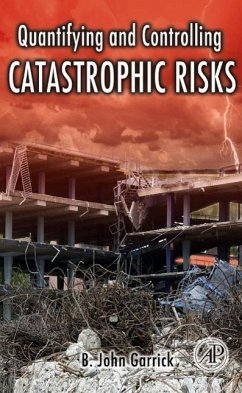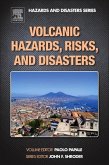The perception, assessment and management of risk are increasingly important core principles for determining the development of both policy and strategic responses to civil and environmental catastrophes. Whereas these principles were once confined to some areas of activity i.e. financial and insurance, they are now widely used in civil and environmental engineering. Comprehensive and readable, Civil and Environmental Risk: Mitigation and Control, provides readers with the mathematical tools and quantitative methods for determining the probability of a catastrophic event and mitigating and controlling the aftermath. With this book engineers develop the required skills for accurately assessing risk and formulating appropriate response strategies. The two part treatment starts with a clear and rigorous exposition of the quantitative risk assessment process, followed by self-contained chapters concerning applications. One of the first books to address both natural and human generated disasters, topics include events such as pandemic diseases, climate changes, major hurricanes, super earthquakes, mega tsunamis, volcanic eruptions, industrial accidents and terrorist attacks. Case studies appear at the end of the book allowing engineers to see how these principles are applied to scenarios such as a super hurricane or mega tsunamis, a reactor core melt down in a nuclear plant, a terrorist attack on the national electric grid, and an abrupt climate change brought about by a change in the ocean currents in the North Atlantic. Written by the current Chairman of the U.S. Nuclear Waste Technical Review Board, Environmental risk managers will find this reference a valuable and authoritative guide both in accurately calculating risk and its applications in their work.
"In this ground-breaking book, John Garrick and his contributors make a most compelling argument for a rational approach to quantifying the risk associated with those low-probability but high-consequence occurrences known as catastrophes. Like the case studies in Quantifying and Controlling Catastrophic Risks, the publication of this book is itself one of those rare events that is of enormous consequence for science, technology, and society." --Henry Petroski, PhD, Aleksandar S. Vesic Professor of Civil Engineering, Duke University; author of To Engineer Is Human and Success through Failure"This is a foundational book. It brings the rigor and discipline of science to decision making - a sorely needed ability in a world faced with increasingly complex risks. John Garrick and his colleagues have armed us with a quantitative framework to address catastrophic events that are too often ignored or wishfully dismissed. I have little doubt that this book will become a standard resource for all who wrestle with complex, high-impact issues." --Thomas O. Hunter, PhD, President and Laboratories Director, Sandia National Laboratories"This book is a must for practitioners and students alike in the field of quantitative risk assessment. John has elegantly laid out the methodology with a number of examples for evaluation of risks from complex systems and events." --Vijay K. Dhir, PhD, Dean, Henry Samueli School of Engineering & Applied Science, University of California, Los Angeles"Over four decades John Garrick has developed and practiced quantitative risk assessment (QRA). He was a co-founder of a leading risk assessment firm, PLG, and with Stan Kaplan authored the "risk triplet" which has formed the basis for QRA studies around the world: What can go wrong? How likely is that to happen? What are the consequences? He writes "A point made in this book is the need for more quantitative information on risks to support rational and scientifically based assessments of threats to society. He presents case studies of applications of QRA: category 4 and 5 hurricanes striking the Gulf Coast, high energy asteroid impacts, terrorist physical and cyber attacks on the electrical grid, and a first pass at abrupt climate change. This book presents the knowledge and insights from Garrick's many years working on QRA applied to nuclear power plants, chemical and petroleum installations, the space shuttle, and transportation." --John F. Ahearne, PhD, Former Chair, US Nuclear Regulatory Commission; Past President, Society for Risk Analysis"Incredible! Arguably the "father of quantitative risk assessment for nuclear power has now come forth with a book that extends this powerful technique to the inevitable global decisions related to potential catastrophes of our time. Since nuclear power remains the only carbon free technology that offers man any real hope of impacting climatic change, this is the perfect companion to his earlier work." --Roger L. McCarthy, PhD, PE, Chairman Emeritus, Exponent, Inc.








